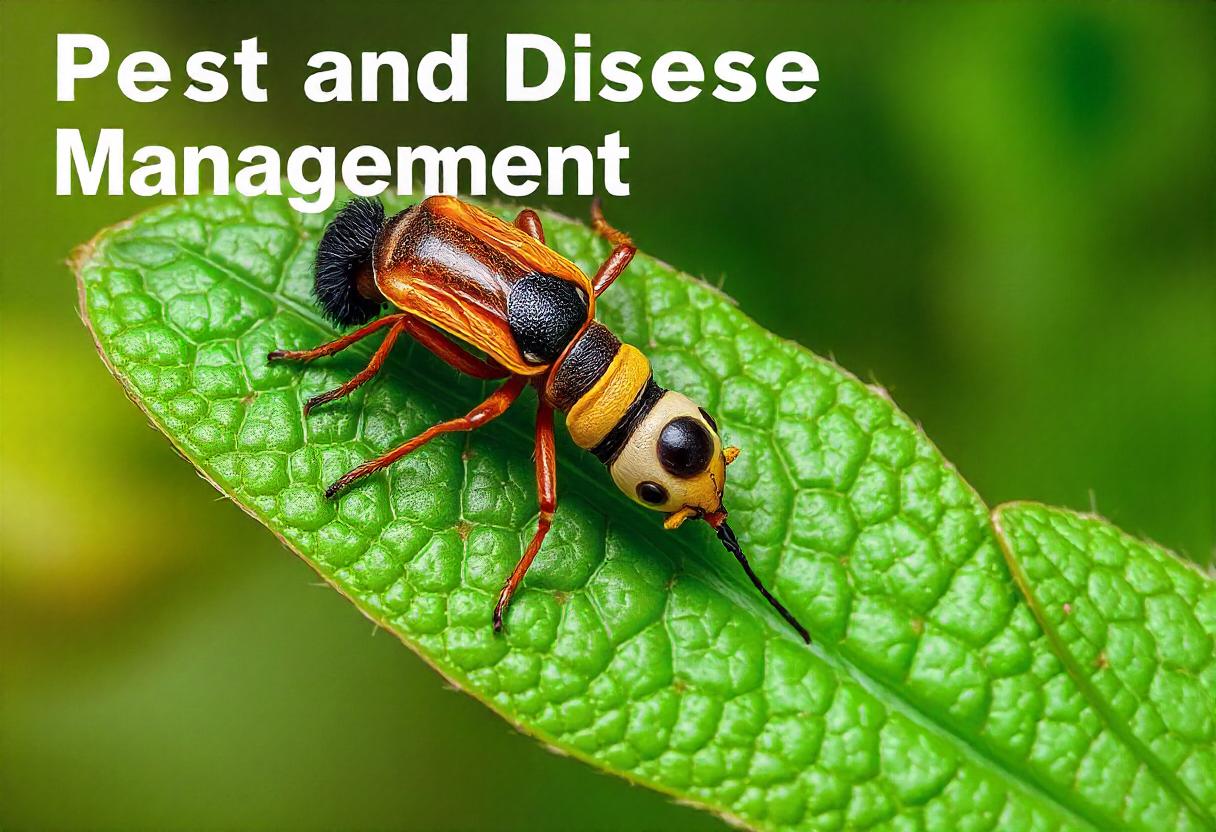
Pest and disease management is a critical aspect of agriculture and horticulture that aims to protect crops and plants from harmful organisms and pathogens. Effective management strategies are essential to ensure healthy plants, maximize yields, and minimize the impact on the environment. This comprehensive guide explores the various methods and practices involved in pest and disease management, offering insights into prevention, control, and sustainable approaches.
1. Understanding Pests and Diseases
Pests
Pests are organisms that cause harm to plants, including insects, mites, nematodes, and rodents. They can damage crops by feeding on plant tissues, transmitting diseases, or causing physical damage. Common pests include:
- Insects: Aphids, beetles, caterpillars, and whiteflies.
- Mites: Spider mites and gall mites.
- Nematodes: Microscopic worms that attack plant roots.
- Rodents: Mice and rats that feed on seeds and seedlings.
Diseases
Plant diseases are caused by pathogens such as fungi, bacteria, viruses, and protozoa. They can lead to symptoms like wilting, leaf spots, and root rot. Examples include:
- Fungal Diseases: Powdery mildew, rust, and blight.
- Bacterial Diseases: Bacterial wilt, soft rot, and leaf spot.
- Viral Diseases: Tomato spotted wilt virus, cucumber mosaic virus.
- Protozoan Diseases: Phytophthora blight and downy mildew.
2. Integrated Pest Management (IPM)
Integrated Pest Management (IPM) is a holistic approach to managing pests and diseases that combines multiple strategies to minimize their impact. The key components of IPM include:
A. Monitoring and Identification
- Regular Inspections: Regularly inspect plants for signs of pests and diseases. Early detection is crucial for effective management.
- Identification: Accurately identify pests and pathogens to choose the most appropriate control methods.
B. Prevention
- Cultural Practices: Implement practices such as crop rotation, selecting resistant varieties, and maintaining soil health to reduce susceptibility to pests and diseases.
- Sanitation: Remove and dispose of infected plant material, clean tools and equipment, and manage irrigation to prevent the spread of pathogens.
C. Control Strategies
- Physical Controls: Use barriers, traps, and manual removal to control pests. For example, sticky traps can catch flying insects, while row covers can protect plants from certain pests.
- Biological Controls: Utilize natural predators and parasites to manage pest populations. For instance, ladybugs can control aphid populations, and parasitoid wasps can target caterpillars.
- Chemical Controls: Apply pesticides and fungicides when necessary. Choose products that are effective but minimize harm to beneficial organisms and the environment. Follow application guidelines and safety precautions.
D. Evaluation
- Assess Effectiveness: Regularly evaluate the effectiveness of pest and disease management strategies. Adjust methods based on outcomes and new information.
- Record Keeping: Maintain detailed records of pest and disease occurrences, control measures used, and their effectiveness. This helps in future planning and decision-making.
3. Sustainable Pest and Disease Management
Sustainability is an important consideration in pest and disease management. Sustainable practices aim to reduce environmental impact and promote long-term health of agroecosystems. Key sustainable approaches include:
A. Organic Farming
- Natural Methods: Organic farming emphasizes the use of natural pest control methods, such as biological controls, plant-based repellents, and organic-approved pesticides.
- Soil Health: Maintaining soil health through organic matter addition and avoiding synthetic chemicals enhances plant resilience and reduces pest and disease pressures.
B. Integrated Pest Management (IPM) Principles
- Ecological Balance: IPM seeks to maintain ecological balance by minimizing the impact of pest control methods on non-target organisms and the environment.
- Reduced Chemical Use: Use chemicals as a last resort, and opt for those with minimal environmental impact.
C. Technology and Innovation
- Precision Agriculture: Employ advanced technologies such as remote sensing, drones, and data analytics to monitor and manage pest and disease issues with greater precision.
- Genetic Resistance: Develop and use crop varieties with enhanced resistance to pests and diseases through breeding and genetic engineering.
4. Challenges and Future Directions
Pest and disease management faces several challenges, including:
- Resistance: Pests and pathogens can develop resistance to control measures, leading to reduced effectiveness over time.
- Climate Change: Changing climate conditions can alter the distribution and behavior of pests and diseases, necessitating adaptive management strategies.
- Global Trade: International trade can introduce new pests and diseases into regions where they were previously absent.
Future directions in pest and disease management may include:
- Innovative Solutions: Continued research into new pest control methods, including biopesticides and microbial control agents.
- Climate Adaptation: Developing strategies to manage pests and diseases in the context of a changing climate.
- Collaborative Efforts: Enhancing cooperation between researchers, farmers, and policymakers to address pest and disease challenges on a global scale.
Effective pest and disease management is essential for maintaining healthy crops and ensuring food security. By employing a combination of monitoring, prevention, control, and evaluation strategies, and embracing sustainable practices, growers can manage pests and diseases effectively while minimizing environmental impact. As the field evolves, continued research and innovation will play a crucial role in addressing emerging challenges and improving management practices.